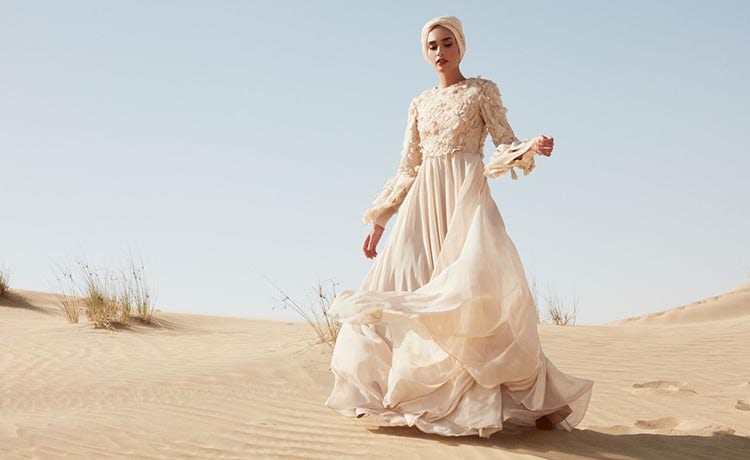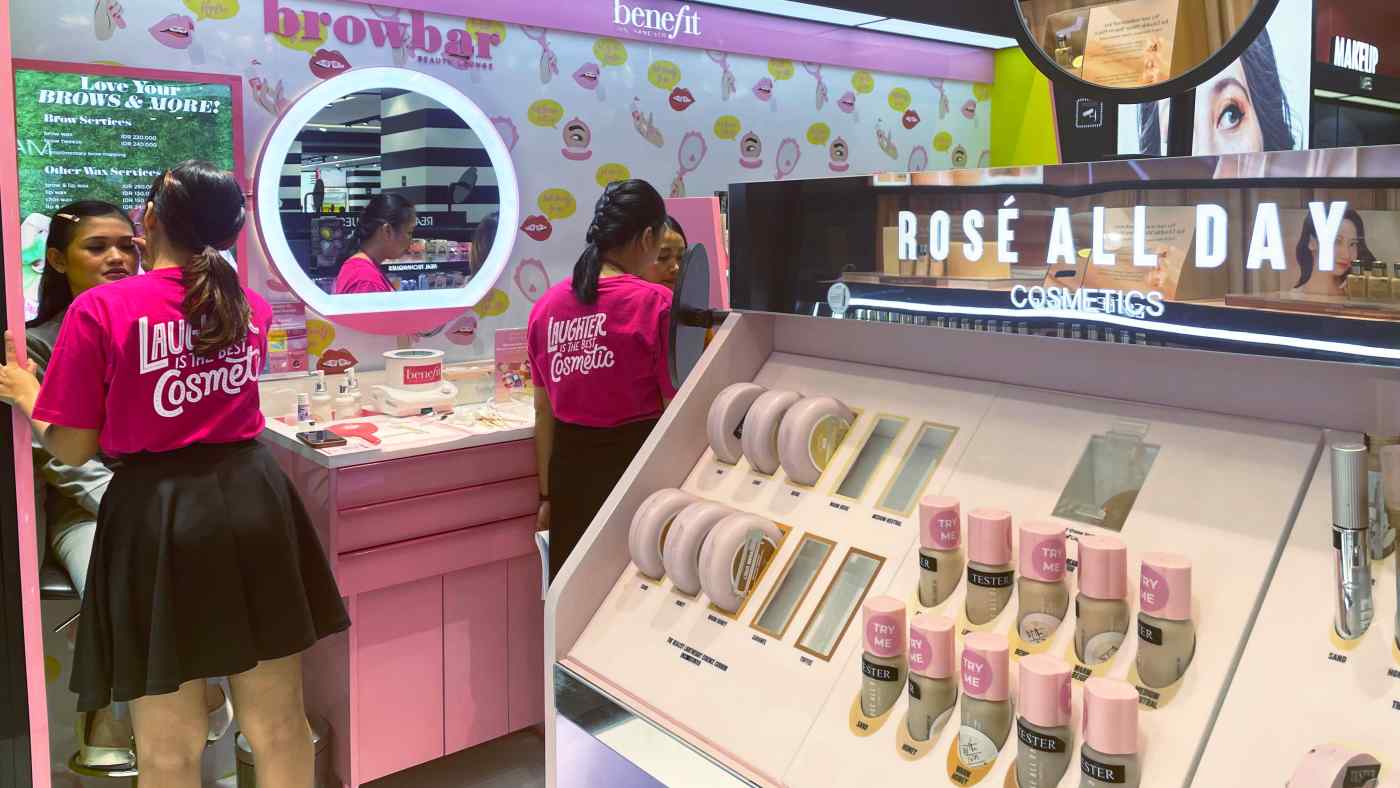Greater nuance, more thorough segmentation and a genuine commitment to consult with the customer is needed if brands are ever going to attract the global modest fashion consumer.

Over the past couple of years mainstream brands have woken up to the power of the modest fashion market. This diverse, global and super savvy customer base are increasingly characterised by a desire for conservative clothing with genuine fashion credentials.
A big part of this demand is being driven by the Muslim fashion consumer, a growing group of trend focused women looking for brands who understand the nuances of their cultural and fashion needs. On the face of it it’s a smart play for any brand given the global Muslim clothing and apparel market is worth $270bn (£207bn) and is set to rise to $360bn (£275bn) by 2023, according to the State of the Global Islamic Economy Report 2018/19 by Thomson Reuters.
And it’s fair to say awareness of the modest consumer is growing. The third London Modest Fashion Week will take place this month, featuring more than 60 global brands. London-based modest fashion specialist Aab, which has a store in the capital and appears in Debenhams concessions across the Middle East, has seen its sales rise 80% year-on-year.
Net-a-Porter now carries a modest fashion edit, while the likes of Zara, Mango and DKNY have all created Ramadan capsule collections. In October 2017, Marks & Spencer introduced an online edit of modest outfit ideas after seeing ‘modest fashion’ become an increasingly popular search term, with customers looking for layering pieces with longer hemlines, sleeves and higher necklines.
While the spectrum of Muslim consumers is broad, it takes more to engage them than using a hijabi model in their promotions or presenting an occasional modest collection.
Burcu Yilmaz, Modanisa
At the couture end of the market, Dolce & Gabbana set the trend in 2016 with the release of a collection of richly embroidered hijabs and abayas. A year later, Nike went live with a range of activewear hijabs, while American Eagle debuted a denim hijab modelled by Halima Aden, the first hijab wearing cover star of British Vogue.
Yet despite the interest from mainstream brands, and the undeniable size of the market, modest consumers still feel let down. Some 86% of Muslim women believe they are being ignored by high street fashion brands, according to an analysis of 500 Muslim fashion consumers by integrated creative agency ODD.
The vast majority of respondents (93%) would be strongly encouraged to visit a high street brand online or in-store if they introduced a modest collection though, while 78% say a modest collection would encourage them to purchase more.
Retailers need to do more to ensure collections are well received though given 63% of respondents feel modest collections created by high street brands tend to appropriate cultural dress, rather than cater to their fashion needs. This attitude was shared by prominent modest fashion blogger Dina Torkia, who called out the strategy behind H&M’s debut modest capsule collection LTD, which was released in time for Ramadan last year.
In a YouTube video, Torkia pointed out that the close proximity to Ramadan meant the LTD collection (priced at £44 to £94) was heavily inspired by traditional Muslim pieces, which modest dressers could buy anyway. She also noted that while the idea was to make modest shoppers feel included, the effect was actually to exclude these consumers further by creating a special category that did not compare in quality to the normal collection.
The blogger then questioned why brands rarely – if ever – consult with the modest community before creating a product. “You can see the sales power that this marketing tool of modest fashion has, so why half-arse it when you know you’re going to get your money back?” she asked.
The main problem is that most fashion brands are ignorant of who their Muslim consumer is and what their actual needs are, says Arif Miah, strategist at ODD.
“They still view Muslim women through an outdated first generational immigrant lens, or at worst, completely ignore their modesty needs when communicating to them,” he explains.
“There are so many distinct characteristics to the British Muslim lifestyle that inform how they shop for fashion, so its imperative brands are informed by insights, not assumptions, if they want to hit the mark.”
Anusha Couttigane, principal analyst for fashion EMEA at Kantar Consulting, agrees there is a tendency to treat the modest shopper as a sort of ‘other’ demographic with completely different needs to consumers generally.
“Trying to develop ranges for this demographic hasn’t always been done with enough consultation and so you then lack the nuances and the specific design needs in terms of what is culturally appropriate for that customer,” she explains.
“There’s also a very fine line between tailoring to a specific audience and then appropriating what that culture might be for a commercial benefit.”
Couttigane argues it is offensive to think about the modest fashion demographic in a purely tactical manner, as the overall message being conveyed by brands is that they see this consumer as a purely commercial opportunity.
“There is a whole discourse that culture is not a costume,” she adds. “It’s not just a fashion trend, so it has to be done in an authentic and consistent way.”
Fashion first
Understanding how to cater to the nuances of the Muslim consumer, while still appealing to the tastes of the wider modest shopper, is something Dubai-based online retailer The Modist has been relentlessly focused on.
Having never marketed itself exclusively for the Muslim market, The Modist is designed as a fashion luxury ecommerce site catering to women of all shapes, sizes and genres of modesty.
The brand launched in 2016 and now stocks 180 brands including Layeur, a fashion forward homegrown label featuring maxi dresses, blazers, trousers and blouses with subtle modest design details. It has a significant customer base in the Gulf countries and is growing in popularity in Europe and America.

Thinking about mainstream brands, PR and marketing director Dima Ayad thinks they are missing a trick by failing to understand the power of the global modest consumer and overcomplicating the opportunity, instead of getting a clear understanding of what these women wants and needs.
She believes one reason brands are failing is because they do not have people around them who dress modestly to give them a “wake-up call”. She believes it would be a “genius move” for brands to make their first foray into the modest market with something tactical like a pop-up or capsule, then reap the rewards and realise the market value. Once they have made a business case for modest fashion, they should go live with new messaging showing consumers they have a committed interest in the category.
“Any time you do a capsule you see whether it has worked for you or not. There’s always a postmortem for every process you do. Did we communicate to the right people? Did we address the audience? Did we get bloggers and influencers to wear our outfits relating to that capsule? I think money talks. Money is a huge motivator to continue so if they do try it they will see it’s going to reap a lot of rewards,” she explains.
The Modist is not the only modest fashion player making a splash in the international market. Established in 2011, Turkish retailer Modanisa sells more than 70,000 modest items from 650 designers and suppliers across 130 countries. The retailer wants to create an environment for shoppers previously “ignored” by the global fashion industry, explains marketing director Burcu Yilmaz.
While couture has a reputation for catering for modest fashion consumers, Modanisa seeks to offer clothing that is affordable and fashionable. The website mixes private label with brands developed by mainly female designers worldwide. Modanisa also collaborates with more than 100 global influencers, such as Dina Torkia, who typically act as affiliates.
There’s a very fine line between tailoring to a specific audience and then appropriating what that culture might be for a commercial benefit.
Anusha Couttigane, Kantar Consulting
Modanisa hopes to open an office in London this year to oversee its North American and European operations using funds secured through the sale of a minority stake in the business to Goldman Sachs and venture capital fund Wamda Capital, finalised in January. With exports accounting for 80% of its business, Modanisa also intends to use the investment to open logistics centres in Europe and the Middle East to increase the speed of its delivery.
While Yilmaz welcomes the general growing interest in the modest consumer from mainstream brands, she insists they need to demonstrate a serious commitment to these shoppers.
“Given the soaring demand for modest fashion and the power of the Muslim pound, it’s no surprise so many major fashion brands are now eager to enter this market. We welcome that, but also urge caution,” she adds.
“While the spectrum of Muslim consumers is broad, it takes more to engage them than using a hijabi model in their promotions or presenting an occasional modest collection.”
This is something brands need to address if they are to truly connect with Muslim audiences, according to Nafisa Bakkar, co-founder of Amaliah, a media platform amplifying the voices of Muslim women. She recognises a tendency among mainstream brands to clump the Muslim shopper into a single audience, reflecting a lack of segmentation and creating a feeling of “representation fatigue”.
“What brands tend to do is say ‘we need to get the Muslim pound, so let’s just put a Muslim consumer in the campaign’ and the easiest way they think they can do that is putting the Muslim woman in a hijab, but a lot of brands end up extending very Euro-centric ideals that are already in fashion and beauty to the Muslim woman,” Bakkar states.
“A lot of times when you do see a Muslim woman in a campaign they look super glamorous, they’re normally fair skinned. They normally look like they’ve stepped off a plane from Dubai. I don’t think it’s actually recognised in the same way as when you look at default audiences and recognise there’s a need for segmentation. We don’t seem to give that same sort of respect to consumer groups who come from ‘diverse’ groups.”

Bakkar is also sceptical about the tactical nature of ‘modest capsules’ and Ramadan collections as brands end up looking like they just want to cash in. She questions all the hype stirred up when a mainstream brand branches out into modest fashion, arguing that what shoppers really want is a more seamless experience.
The lack of consultation with modest consumers reflects a wider issue around the decision makers working on campaigns and whether they have an authentic perspective or appreciate how Islam manifests itself differently in people’s lives.
“It’s all well and good casting a Muslim woman in a campaign, but then if every single person behind the camera, calling the shots, in the strategy meeting is so far removed from the realities of these consumer groups then there’s not going to be nuance,” argues Bakkar.
Nuance needed
The sad reality is Muslim shoppers are fully prepared to be let down by mainstream brands. According to the ODD analysis, 78% of respondents say they very frequently need to combine multiple fashion items to meet their modest requirements, while 76% very frequently put products back in-store because they do not meet their requirements. In fact the majority of respondents (97%) consider modesty when shopping for fashion.
These consumers are, however, avid shoppers. The survey reveals 83% of Muslim women visit a fashion or accessories store or website each month, with 70% visiting every week. In fact, Muslim women actually spend 16% more on fashion than the average British consumer.
Social media has undoubtedly given the modest fashion category a new spotlight, enabling these consumers to take style inspiration from like-minded peers and become more experimental in their choices by mixing luxury, mainstream and specialist brands, explains Mintel senior retail analyst, Samantha Dover.
Get it right, and Dover believes the modest fashion consumer presents a “major opportunity for fashion brands and retailers”, especially given these shoppers are typically far more loyal as they have a meaningful reason as their fashion choices, often intrinsically linked to their beliefs.
Tapping into the modest demographic may seem like a savvy play for brands, but they must appreciate the nuances of this diverse, global and highly connected consumer base who have considerable spending power and the confidence to go elsewhere if they feel dissatisfied.



